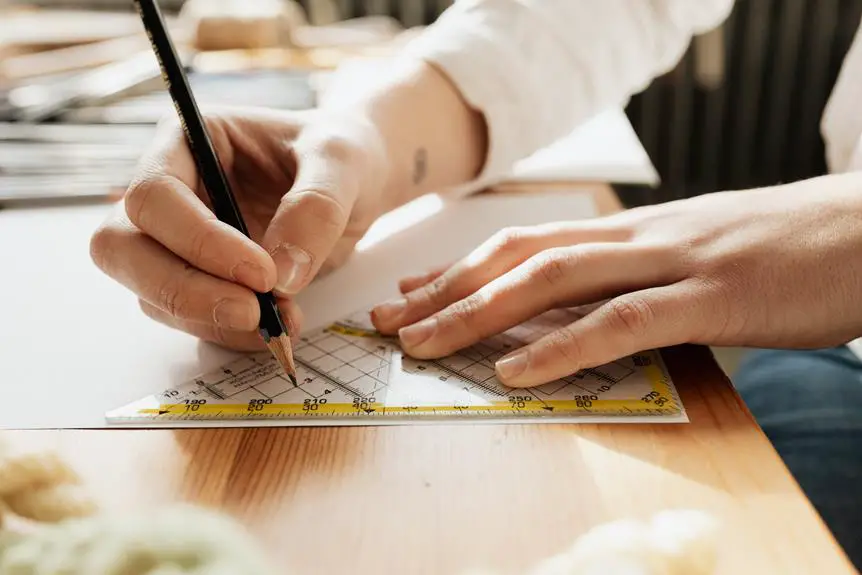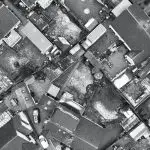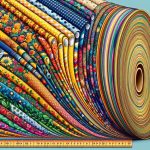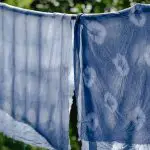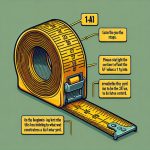Are you tired of struggling to measure fabric accurately? Understanding linear inches is like unlocking the secret code to perfect fabric measurements.
In 'Understanding Linear Inches: A Fabric Measurement Guide,' you'll gain mastery over the art of measuring fabrics with precision. This guide provides clear, professional, and engaging insights into the importance of linear inches, tools for accurate measurement, calculating linear inches for sewing projects, understanding fabric yardage, and tips for measuring odd-shaped fabrics.
You'll also learn how to effortlessly convert linear inches to other units. Say goodbye to fabric measurement woes and hello to confidence in your sewing projects!
Key Takeaways
- Linear inches combine the dimensions of height, width, and depth.
- Understanding linear inches is important for traveling and shipping.
- Knowledge of linear inches prevents unexpected fees.
- Compliance with guidelines ensures smooth transit or production.
What Are Linear Inches
Linear inches are a measurement of length that combines the dimensions of height, width, and depth. This measurement is commonly used when measuring non-fabric items such as luggage, boxes, and other three-dimensional objects. To calculate linear inches, simply add the height, width, and depth of an object together. For example, if you have a suitcase that measures 28 inches in length, 18 inches in width, and 12 inches in depth, the sum of these dimensions (28 + 18 + 12) equals 58 linear inches.
Understanding linear inches is essential for practical applications, especially when it comes to traveling and shipping. Airlines and transportation companies often have restrictions on the size of luggage based on linear inches, so knowing how to calculate this measurement accurately can help avoid additional fees or complications when traveling.
Additionally, when shipping packages, many courier services use linear inches to determine pricing, making it crucial to understand how to measure and convert linear inches effectively. Mastering the concept of linear inches and its conversion is fundamental for anyone dealing with three-dimensional measurements in their professional or personal life.
Importance of Linear Inches
When traveling or shipping items, you'll often encounter restrictions based on the size of your luggage or packages, and understanding the importance of linear inches is crucial for navigating these limitations effectively.
Here's why mastering the concept of linear inches is vital:
- Accuracy: Ensuring the accuracy of linear inches measurement is essential for meeting airline or shipping company size restrictions.
- Efficient Fabric Utilization: Understanding linear inches allows you to maximize fabric usage when sewing or working with textiles, saving money and reducing waste.
- Odd Shaped Fabric Measuring Techniques: Linear inches help in measuring irregularly shaped fabrics, enabling you to determine the amount needed accurately.
- Avoiding Additional Costs: Knowledge of linear inches prevents unexpected fees due to oversized luggage or packages, saving you time and money.
- Compliance with Guidelines: Whether for shipping packages or designing garments, understanding linear inches ensures compliance with size guidelines, preventing issues during transit or production.
Understanding the importance of linear inches directly impacts your ability to travel hassle-free and optimize fabric usage, making it an essential skill for anyone dealing with measurements.
Measuring Fabric Accurately
To measure fabric accurately, you should measure from the starting point to the ending point using a ruler or measuring tape. This ensures precision and eliminates errors in measurement.
When measuring, it's important to account for the specific characteristics of different fabric types. For example, stretchy fabrics like spandex or knits may require different handling compared to woven fabrics like cotton or linen. When measuring these fabrics, it's crucial to maintain a consistent level of tension to get an accurate measurement.
Additionally, for fabrics with a pattern or nap, such as velvet or corduroy, it's essential to measure with the pattern direction in mind to ensure accurate cutting and sewing.
Furthermore, considering the fabric's drape and weight is vital for accurate measurements, especially when working with fabrics like silk or chiffon.
Tools for Fabric Measurement
When measuring fabric accurately, you should use tools such as rulers, measuring tapes, and fabric weights. These tools are essential for ensuring precision in your fabric measurements.
Here are some indispensable tools for fabric measurement:
- Fabric ruler: A fabric ruler is a specialized ruler designed for measuring fabric accurately. It typically has clear markings and a sturdy design to ensure precise measurements.
- Measuring tapes: A flexible measuring tape is crucial for measuring curved or irregularly shaped pieces of fabric. Look for a measuring tape with both inches and centimeters for versatility.
- Fabric weights: Fabric weights are used to hold fabric in place while measuring and cutting, preventing shifting or distortion that can lead to inaccuracies.
- Rotary cutter: A rotary cutter allows for efficient and precise cutting of fabric, especially for straight lines and smooth edges.
- Digital measuring tape: A digital measuring tape provides accurate measurements with the convenience of digital display, making it easy to read and record measurements.
These tools are essential for achieving accuracy and consistency in fabric measurement, ensuring that your sewing and crafting projects turn out just as you envision.
Calculating Linear Inches for Sewing
To accurately calculate linear inches for sewing, you'll need to measure the fabric using the tools discussed in the previous section, ensuring precision and consistency in your sewing projects.
When measuring fabric for sewing projects, it's essential to measure the length and width of the fabric in a straight line. The length is the longest side of the fabric, while the width is the shorter side.
Use a reliable measuring tape to measure from one end of the fabric to the other for the length and from one side to the other for the width. Ensure that the fabric is laid out flat and smooth to get accurate measurements.
Once you have the measurements for the length and width, simply add them together to get the total linear inches of the fabric. For example, if the length of the fabric is 60 inches and the width is 45 inches, the total linear inches would be 105 inches (60 + 45 = 105).
Understanding fabric dimensions and accurately calculating linear inches is crucial for successfully planning and executing your sewing projects.
Understanding Fabric Yardage
Now that you have a good grasp of calculating linear inches, it's time to tackle the intricacies of understanding fabric yardage.
You'll learn how to calculate the right amount of fabric yardage for your sewing projects and how to make the most of your fabric to minimize waste.
Understanding fabric yardage is essential for efficient and cost-effective fabric usage.
Calculating Fabric Yardage
You can calculate fabric yardage accurately by measuring along and across the fabric and then adding those measurements together. To ensure you master this essential skill, follow these tips:
- Measure the length of the fabric, typically parallel to the selvage edge.
- Measure the width of the fabric, usually perpendicular to the selvage edge.
- Add a few extra inches to account for any pattern matching or errors in cutting.
- Use your calculated yardage to determine how much fabric you need for your project, considering the fabric cutting techniques you'll employ.
- Always double-check your measurements and calculations to avoid running short on fabric.
Mastering the art of calculating yards accurately will empower you to approach your projects with confidence and precision.
Choosing the Right Amount
Understanding fabric yardage involves assessing the required amount with precision and consideration. When it comes to fabric quantity, budgeting is crucial. It's important to purchase the right amount to avoid waste and unnecessary expenses. Additionally, take into account storage space and fabric management. Here's a helpful guide to estimate fabric yardage for common projects:
| Project | Fabric Type | Yardage Needed |
|---|---|---|
| Pillow Covers | Cotton | 1-2 yards |
| Tablecloth | Linen | 3-5 yards |
| Dress | Silk | 4-6 yards |
| Curtains | Sheer Fabrics | 8-10 yards |
Utilizing Fabric Efficiently
To maximize fabric usage, consider the layout of pattern pieces when cutting. Efficient fabric utilization is key to minimizing waste and getting the most out of your yardage. Here are some tips for layout optimization and pattern cutting:
- Strategic Placement: Arrange pattern pieces close together to minimize unused fabric.
- Directional Layout: Pay attention to the grainline of the fabric to ensure proper drape and fit.
- Pattern Matching: Align pattern pieces to create seamless designs, especially for prints and plaids.
- Nesting: Utilize small scraps for smaller pieces or bias strips to make the most of leftover fabric.
- Measure Twice, Cut Once: Double-check measurements and layout before cutting to avoid mistakes.
Tips for Measuring Odd-Shaped Fabrics
When measuring odd-shaped fabrics, start by identifying the longest straight edge for a more accurate measurement. This method works well for irregular shapes and unconventional materials. Once you've found the longest straight edge, use a flexible measuring tape to follow the contours of the fabric. Take note of any indentations or protrusions, and measure from the widest points to ensure you capture the full dimensions of the fabric.
If the fabric has curves or angles, break it down into smaller sections and measure each part individually. Add these measurements together for the total linear inches.
When dealing with fabrics that have uneven edges, such as lace or tulle, lay the fabric flat and measure the longest and widest points. Don't forget to account for any embellishments or fringes that may extend beyond the main fabric.
Converting Linear Inches to Other Units
You can convert linear inches to other units by multiplying the measurement in linear inches by the conversion factor for the desired unit.
When converting linear inches to other units, here are some helpful tips to keep in mind:
- Converting inches to centimeters: To convert linear inches to centimeters, multiply the measurement in inches by 2.54, as 1 inch is equal to 2.54 centimeters.
- Converting yards to meters: When converting linear inches to meters, remember that 1 yard is equal to 0.9144 meters. So, multiply the measurement in yards by 0.9144 to get the equivalent measurement in meters.
- Rounding off: When converting linear inches to other units, it's important to round off the final result to the appropriate decimal place based on the precision required.
- Unit consistency: Ensure that you're using the correct conversion factor for the specific unit you're converting to, to maintain accuracy in your measurements.
- Double-checking: Always double-check your calculations when converting linear inches to other units to avoid errors in the final measurements.
Understanding how to convert linear inches to other units is essential for accurate and precise fabric measurements.
Frequently Asked Questions
Can Linear Inches Be Used to Measure Non-Fabric Items, Such as Furniture or Boxes?
Yes, linear inches can be used to measure non-fabric items like furniture or boxes. It's a simple and effective way to get accurate measurements for items of various shapes and sizes.
How Does the Weight and Thickness of Fabric Affect the Accuracy of Linear Inch Measurements?
When measuring fabric, weight and thickness can affect accuracy. Stretchy fabrics and elastic considerations also impact linear inch measurements. Understanding these factors is crucial for precise measurements, especially when dealing with various fabric types.
Are There Any Special Considerations for Measuring Stretchy or Elastic Fabrics in Linear Inches?
When measuring stretchy or elastic fabrics in linear inches, consider the fabric type, accuracy, and stretchiness. Account for fabric weight and thickness, especially for sewing projects. Linear inches for non-fabric items also require attention to elasticity.
Can Linear Inches Be Used to Determine the Amount of Fabric Needed for Quilting or Other Specific Sewing Projects?
Yes, linear inches can accurately determine fabric needed for quilting and other sewing projects. Consider fabric weight and stretch when measuring stretchy fabrics. Knitted and woven fabrics differ in measurements. Tulle and lace require special considerations.
Are There Any Differences in Measuring Linear Inches for Different Types of Fabric, Such as Knits, Wovens, or Specialty Fabrics Like Tulle or Lace?
When measuring knits, wovens, tulle, or lace, differences arise due to the fabric's stretchiness or texture. Stretchy fabrics like knits may require adjustments, while delicate lace and tulle need careful handling. Consider these nuances for accurate measurements in your sewing projects.
- How Does Ring Spun Cotton Affect Garment Fit and Shape Retention? - August 13, 2024
- What Are the Challenges in Producing Ring Spun Cotton? - August 13, 2024
- Is Ring Spun Cotton Suitable for Plus-Size Clothing? - August 13, 2024

